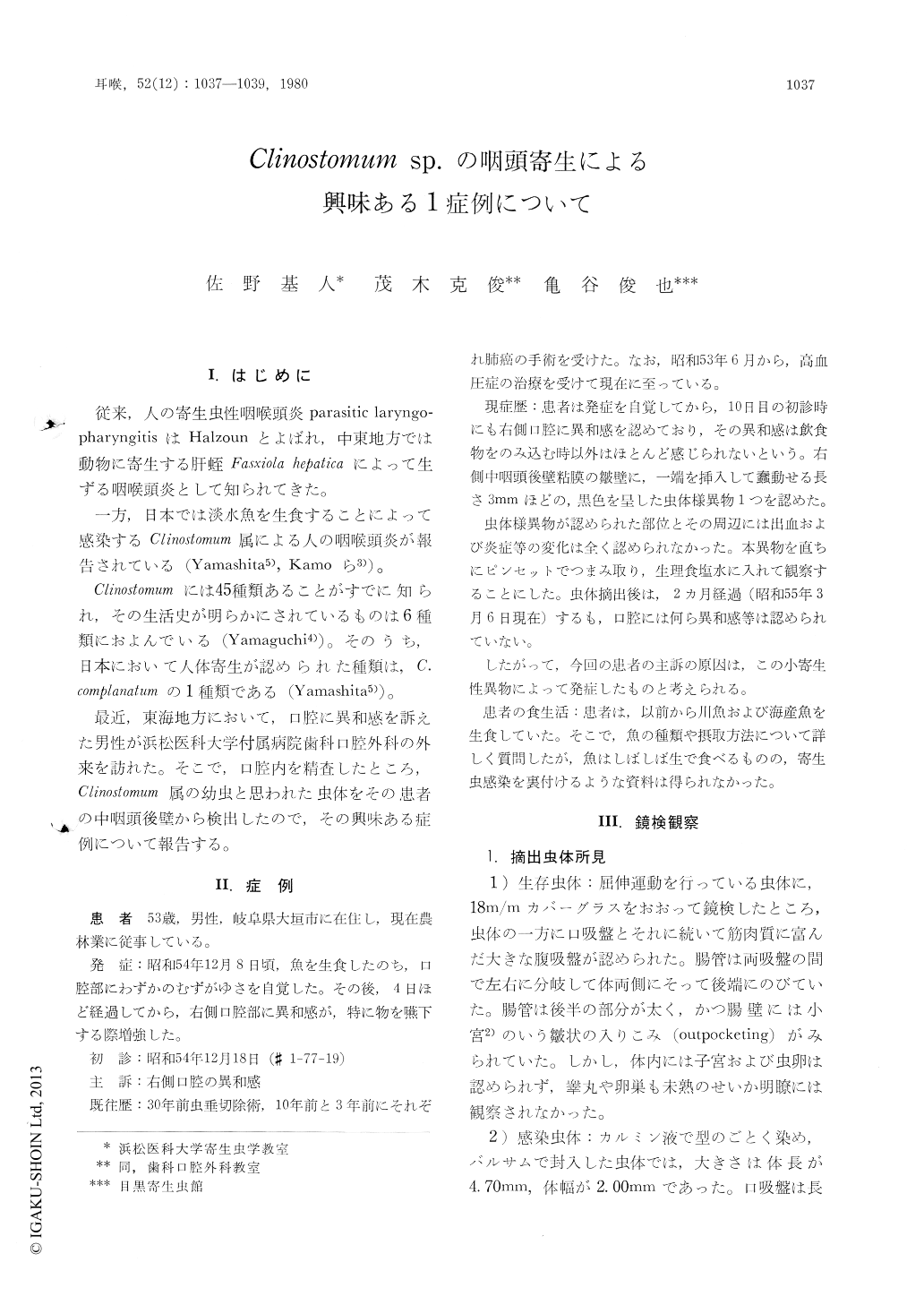Japanese
English
- 有料閲覧
- Abstract 文献概要
- 1ページ目 Look Inside
I.はじめに
従来,人の寄生虫性咽喉頭炎parasitic laryngopharyngitisはHalzounとよばれ,中東地方では動物に寄生する肝蛭Fasxiola hepaticaによって生ずる咽喉頭炎として知られてきた。
一方,日本では淡水魚を生食することによって感染するClinostomum属による人の咽喉頭炎が報告されている(Yamashita5),Kamoら3))。
Clinostomumには45種類あることがすでに知られ,その生活史が明らかにされているものは6種類におよんでいる(Yamaguchi4))。そのうち,日本において人体寄生が認められた種類は,C. complanatumの1種類である(Yamashita5))。
最近,東海地方において,口腔に異和感を訴えた男性が浜松医科大学付属病院歯科口腔外科の外来を訪れた。そこで,口腔内を精査したところ,Clinostomum属の幼虫と思われた虫体をその患者の中咽頭後壁から検出したので,その興味ある症例について報告する。
Clinostomum is a small trematode which has been recovered mainly from birds. However, it was found that man can be infected with this parasite resulting in laryngopharyngitis, and the infection is believed to be caused by eating raw fresh-water fishes.
An immature trematode was found in mucosa of the laryngeal cavity of a 46-year-old male patient at Hamamatsu University Hospital 4 days after the patient had eaten raw, fresh-water fishes of unknown name. The patients had complained of itchiness and discomfortable sensation in the throat, and there was found a mild laryngitis.
The worm body was linguiform, measuring 4.7 mm in length, 0.38 mm in width. The intestine showed sinuous wall in the hind body of the worm, and no egg was observed in the uterus.
The authors identified this worm as Clinostomum sp. based on the morphological findings and the mode of infection.

Copyright © 1980, Igaku-Shoin Ltd. All rights reserved.


